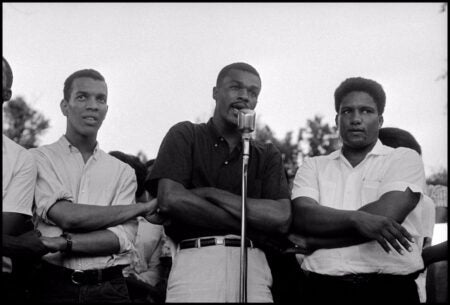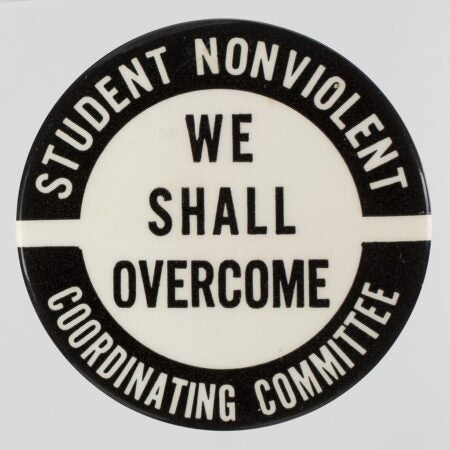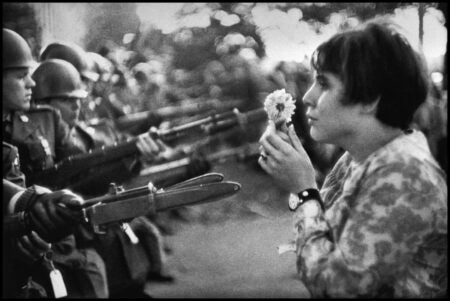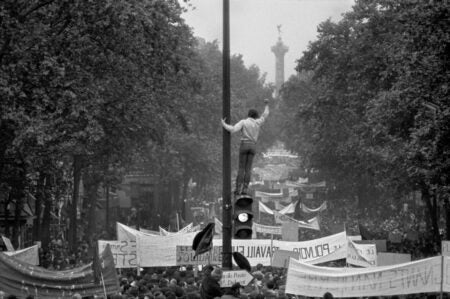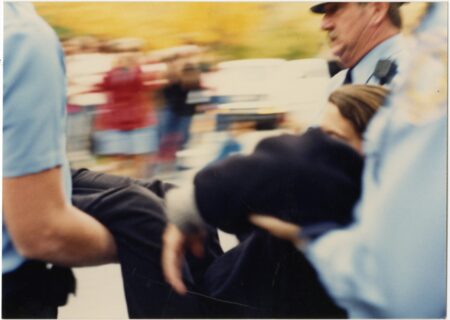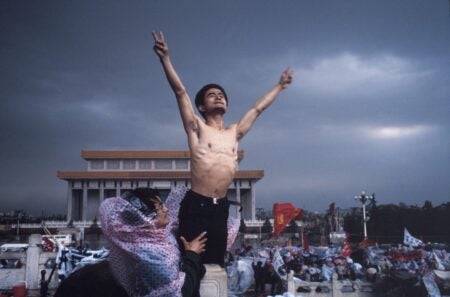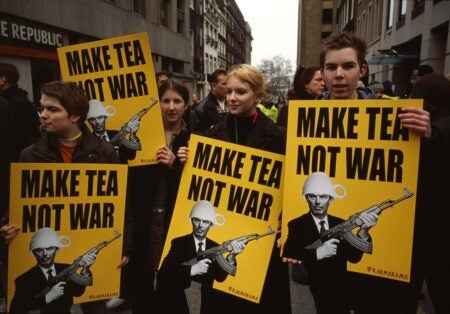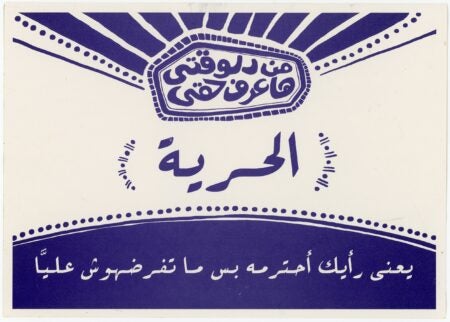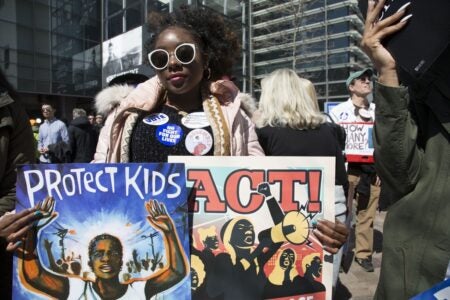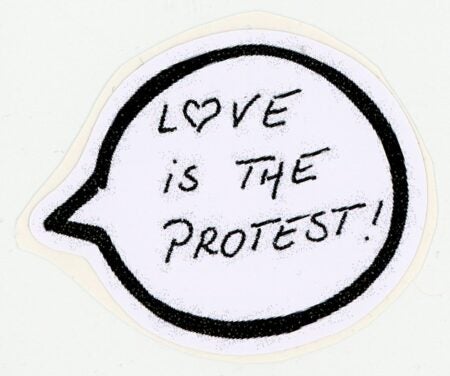Say it loud: the powerful voice of student activism
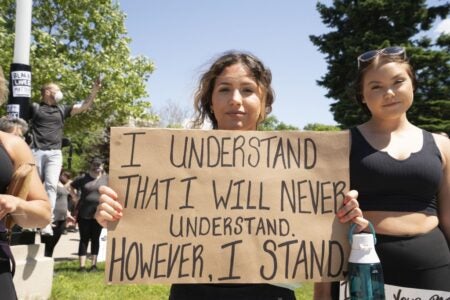
Larry Towell. Canada, London. June 7, 2020. Peaceful Black Lives Matter protest in response to the police killing of George Floyd… Photograph. © Larry Towell / Magnum Photos. © 2022 Artists Rights Society (ARS), New York / SAIF, Paris.
I UNDERSTAND THAT I WILL NEVER
UNDERSTAND.
HOWEVER, I STAND.1
Students have been “standing” for centuries, and activism is at least as old as the modern western university. From Bologna in the Middle Ages through Paris, Oxford, and Cambridge, student collectives effectively determined their fees. Currently, in a world moved by activism, student uprisings are on the rise. We’re in a groundswell of youth protest, a renaissance partly defined by social media. See #BlackLivesMatter, #MeToo, #NeverAgain, #climatechange, and many more.
The fervor of today’s activism recalls the movements of the sixties, a socially transformative period epitomized by books with titles like Generation on Fire and The Shattering. Image collections across the JSTOR platform chronicle these years. Acts of solidarity and resistance to police brutality are documented in photographs: three young Black men linking arms, 1962; teenage girls detained in a prison following peaceful protest, 1963. “We Shall Overcome,” the unofficial anthem of the movement, expresses the protest of the Student Nonviolent Coordinating Committee (SNCC) captured on a pin-back button.
The tsunami of youth resistance to the Vietnam War is crystallized in a single image by Marc Riboud from 1967. In it, a young woman urges peace by raising a chrysanthemum against the guns of the American National Guard. A period of civil unrest known as May 68 began in Paris during the spring of 1968 and spread throughout France. It was catalyzed by a student movement that involved hundreds of thousands of protesters, shown above in a triumphant street view by Bruno Barbey.
Student protests have continued to mobilize around vital issues over the decades. The anti-Apartheid movement and the divestment of American interests in South Africa, notably at universities across the United States, is represented in this image showing the forcible removal of a young woman from the Wellesley campus in October 1986. By 1988, student activism was at the root of the divestment of more than 150 universities.2 In 1989, the pro-democracy movement in China swelled to hundreds of thousands of occupying students at Tiananmen Square. They protested for more than a month, until the military launched a deadly ambush.3 F15 — February 15, 2003, “the day the world said no to war” — was marked by an unprecedented global demonstration against the Iraq War. Millions of marchers gathered in hundreds of cities, including London, where students displayed signs reading “Make tea not war.”
In 2011, the Arab Spring generated uprisings from Tunisia and Egypt, throughout the Middle East, to Northern Africa, prompting the overthrow of governments. A participant — Omar, who was 15 at the time — recalled, “Tahrir remains the purest moment of my life – the sense of security, unity, bond, brotherhood, sisterhood, the way people helped each other regardless of faith or politics. Everyone was on the same page for once, nothing else mattered.” 4 A photograph from Tahrir Square demonstrates the unity he describes, while a “Freedom” sticker commemorates the inspiration. Closer to home, in 2018, students took up the fight against gun violence. On March 24, one month after a gunman murdered 17 students at Marjory Stoneman Douglas High School in Parkland, Florida, a group of teenage survivors of the attack led millions of Americans across the country in a march against gun violence.
The art of protest, including signs, stickers, and fashion, strengthens the call for justice. Shepard Fairey’s distinctive graphics lend poetry to the movement against guns, while a handmade sign spells out a basic truth: “Race is not a crime.” A whimsical sticker (“Love is the protest!”) by street artist Art. Omato evokes the pervasive spirit of sixties counterculture.
History and exceptional individuals — Malala, Greta, and X González — teach us the power of student activism. As Tess Murphy, gun control advocate, said in the wake of the 2022 Uvalde school shooting at Robb Elementary, “But one thing I’m not is hopeless… When we fight, we win.”
Artstor collections
- Magnum Photos
- Panos Pictures
- Open: Smithsonian National Museum of African American History & Culture
- The Schlesinger History of Women in America Collection
Shared collections
- Street Art Graphics Digital Archive, St. Lawrence University
- Wheaton College (MA) Marion B. Gebbie Archives Image Collection
- Muhlenberg College: Protest Artifacts
- Wellesley College Archives Image Gallery
- Student Unrest at Salve Regina, 1969-1973
- Campus and Queens Activism of the 1960s
- Student Activism on Campus (a Reveal Digital collection)
